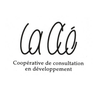note Note générale
Renaissance Montréal: Case Study
Introduction
In Québec, community economic development initiatives often focus on an approach involving economic reintegration1 in order to attain their objectives:
More precisely, economic reintegration is a practice that proposes a voluntary return to employment on the part of people who have been excluded. Economic reintegration does not hold the abolition of poverty to be its primary goal, but rather to combat the social exclusion to which too many individuals living in advanced industri- alized societies fall victim. It is not in any way an admission of defeat before the fact that more and more individuals risk being affected by poverty but it is rather a particular effort made to give a chance to individuals to get control of their lives, and to escape from or avoid poverty. Economic reintegration aims among other things to allow excluded persons to regain some measure of dignity and exercise their citizenship.2
Depending on the case, activities involving economic reintegration usually respond to the pressures of supply and demand in the labour market.3 Concretely, this means either the creation of new paid work spaces and the maintenance of existing jobs (supply) or the development of qualifica- tions permitting access to paid work (demand) by means of personal development as well as the development of overall employability.
As an organization, Renaissance Montréal operates mainly on the level of demand since its original vocation is as a training business. However, its remarkable growth in recent years has led to the addition of a business section able to create permanent employment. It does not correspond to an activity of economic reintegration with respect to the supply of jobs since generally speaking socially excluded persons do not have access to them. Seen through a local development lens, these jobs are not in any way to be thought of as negligible. When considered with Renaissance’s growing annual budget, it is obvious that the economic impact generated by Renaissance in those neighbour- hoods where it is active is considerable. In addition, its sphere of activity – the field of the ‘3Rs’: reduce, reuse, recycle – means that it plays a role as an actor in terms of sustainable development. The least that can be said is that Renaissance Montréal certainly has the wind in its sails... in its recycled sails at that!
As is the case for any company or organization, the success of Renaissance Montréal is not related to any one factor. Consequently, what is now emerging from its background is the idea that partnership – or in its particular case, partnerships, plural – may prove to be one of the keys to successful economic reintegration.
Complete document
pdf Renaissance Montréal: Case Study William A. Ninacs et Francine Gareau 2003William A. Ninacs, Renaissance Montréal: Case Study, avec la collaboration de F. Gareau, Ottawa, Caledon Institute of Social Policy, 18 pages, 2003
note Note(s) liée(s)
diversity_3Organisation(s) reliée(s)
bookmark Terme(s) relié(s)
 10 avril 2023
10 avril 2023
Développement durable
10 avril 2023 26 mars 2023
26 mars 2023
Développement économique communautaire
26 mars 2023 8 juin 2023
8 juin 2023
Exclusion sociale
8 juin 2023 12 juin 2023
12 juin 2023
Partenariat
12 juin 2023 7 juin 2023
7 juin 2023
Réduction, réemploi, recyclage et valorisation (3RV)
7 juin 2023Carnet(s) relié(s)
 file_copy
137 notes
file_copy
137 notes
Productions de William « Bill » Ninacs
file_copy 137 notes file_copy
88 notes
file_copy
88 notes
Archives de la Coopérative de développement La Clé
file_copy 88 notesAuteur·trice(s) de note
Contacter l’auteur·trice Discuter de la note Plus d’informationsPublication
17 mai 2023
Modification
15 juin 2023 09:55
Visibilité
public


